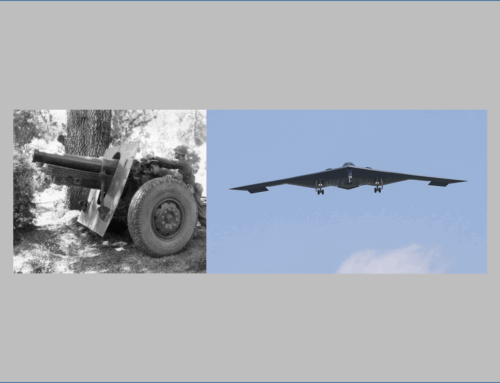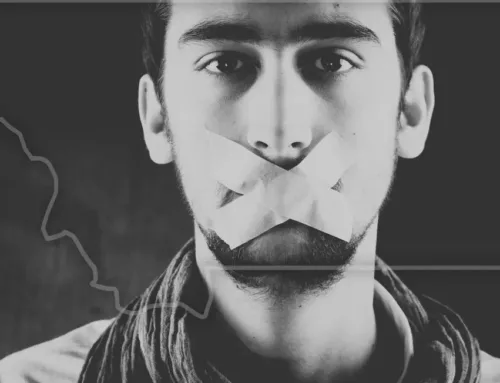The Tragic Story of WWI Distinguished Service Cross Recipient Charles Sanford Morrison
Published: 12 August 2024
By Michael Santoro
Special to the Doughboy Foundation website

Santoro 1
This extraordinary painting depicting an American soldier charging “over the top” was painted in 1918 by Corporal Charles Santford Morrison, Company L, 354th Infantry Regiment, 89th Division. Morrison was overseas from June 5th, 1918, until May 20th, 1919, meaning that Morrison painted this in France, likely before traveling into Germany to become part of the Army of Occupation. It may be a depiction of himself during the act for which he was awarded the Distinguished Service Cross, which he was awarded while in prison in 1923.
 The Painting is Signed in the bottom right hand corner, C. Morrison ‘18.
The Painting is Signed in the bottom right hand corner, C. Morrison ‘18.
Morrison would tragically pass away only 5 years later of Pneumonia due to his weakened lungs from the effects of chemical gas exposure during the war.
Morrison was awarded the Distinguished Service Cross for actions taking place on September 30th, 1918, the citation for which reads:
The President of the United States of America, authorized by Act of Congress, July 9, 1918, takes pleasure in presenting the Distinguished Service Cross to Corporal Charles S. Morrison (ASN: 2179880), United States Army, for extraordinary heroism in action while serving with Company L, 354th Infantry Regiment, 89th Division, A.E.F., at Charey, France, 30 September 1918. On the morning of 30 September 1918, Corporal Morrison volunteered to accompany an officer of his company in the rescue of a wounded man of his battalion who had been on patrol. Proceeding under intense and accurate fire to a point 400 yards beyond his outpost, he met a member of the patrol who stated that the wounded man was about 100 yards farther out and close to the hostile lines. With splendid courage, he proceeded to the point indicated, in company with his officer, being constantly subjected to the heaviest fire, and found the soldier, who had died from his wounds. Returning in safety to his own lines, he exchanged shots with the enemy, one of whom he killed.
The painting is in a magnificent period frame measuring roughly 16½ x 30½”. On the top left corner of the reverse side, there is a tag.
There are two stamps over the label, the first being an American Legion Collections Stamp from the Historian of Post 362, which is in East Aurora, New York, and the second being a red DEACCESSIONED, which was used when the painting was sold by the American Legion Post to raise funds.
The oil painting depicts a line of American soldiers wearing “Doughboy” steel helmets, bayonets affixed to their rifles, preparing to charge toward the enemy with what appears to be a British officer sporting a burlap-covered steel helmet at the far left. The 2nd soldier from the left, presumably Morrison, is the focus. On the far right, what appears to be a British Mark V “Landship” Tank begins its charge. Small explosions can be seen in the air toward the right, likely Anti-Aircraft “Pom-Pom” fire against aero-planes. The painting is in miraculous condition for its age, having very few scuffs or bits of damage.
Charles Santford Morrison was born on March 16th, 1888, in St. Louis, Missouri. He married Agnes Catherine Marchwinski on December 25th, 1910, and they gave birth to two children, Charles and Agnes, in 1911 and 1915 respectively.
Morrison first enlisted in the Missouri National Guard in 1910, being mustered into the First Missouri Regiment of Infantry on June 26th, 1916. Morrison was made a Stable Sergeant in the Headquarters Company. After the U.S. entered the war, he attempted to claim exemption for support of his wife and child, but this was denied, and he was drafted as a Private into Company L, 354th Infantry Regiment, 89th Division. Upon arriving in France on June 5th, 1918, he was made a Corporal. While in combat, Morrison was exposed to chemical gas, weakening his lungs, and also suffered a gunshot wound. During the Meuse-Argonne Offensive, he performed an act of heroism that would not be recognized until several years later. Morrison saw combat in the St. Mihiel & Meuse Argonne Offensives, and returned stateside on May 20th, 1919.
After the war, in 1920, he was working in a shoe factory, but he was shortly thereafter fired, and was unable to find work. In December 1922, with the assistance of a social worker, his wife and two children were sent to a “Night and Day Camp”, while he attempted to find work. Once he found work, he went to the camp and offered to pay for the care of his family, but was refused, and was refused permission to see his wife. In May 1923, Charles was arrested and charged with wife abandonment, for which he was convicted. He was sentenced to a one-year term in a workhouse by Judge Calvin Miller. During this time, the application submitted for his Distinguished Service Cross was finally approved by the War Department, and after some investigation, Major J. E. McCarron, U.S. Army Adjutant of the 102nd Reserve Division, found that Morrison had been in prison.
Morrison had refused to accept the award while in prison out of embarrassment, so McCarron directed the attention of Colonel Frank G. Jonah, chairman of the Executive Committee of the American Legion, to the case, with the Legion endeavoring to secure a parole for Morrison which would permit the award of the D.S.C. This was denied several times by the Judge, who cited that despite being a war hero, Morrison was a “horrible husband” who drank heavily. This was disputed by Morrison’s family, who was also at work securing his parole. His parole was finally granted and he was reunited with his family, being awarded his Distinguished Service Cross at Jefferson Barracks in September 1923. Things were finally beginning to turn in a positive direction, but this would unfortunately not last long.
In December 1923, due to the fierce winter lowering temperatures to 11°F, Morrison contracted a severe cold, which was exacerbated by his lungs, weakened by his exposure to mustard gas during the war. His condition only worsened, and on December 16th, 1923, Morrison passed away from Double Pneumonia, at the age of 35, leaving his wife, Agnes, to raise their two children alone. Funeral charge was directed to the St. Louis Chapter No. 1 of the Disabled Veterans of the World War, of which he was a member, and he was buried with full military honors. The chapter also conducted the rites at Valhalla Cemetery, where a firing squad fired a volley and “taps” were sounded as the flag-draped casket of the war hero was lowered into the grave.
The story of Charles S. Morrison is a tragic tale of a man who displayed extraordinary courage & heroism serving a country that did not yet have procedures in place to assist war veterans burdened by poverty or wounds received in action. The Purple Heart would not be authorized until 1932, and during World War I, wounds were only recognized by a small chevron worn on the right cuff of the service uniform. After losing his job, there was nowhere he could turn for assistance, and ultimately died as a result of his wounds. We hope that by sharing his story here, we can immortalize Charles Santford Morrison, and honor the sacrifices he made for his fellow man.
Huge thanks again to the Doughboy Foundation for the opportunity to share this story, and International Military Antiques for the opportunity to research this piece.
Michael R. Santoro is a historic researcher & preservationist of the First World War. After finishing his Bachelor’s and Master’s degrees in Architecture & Historic Preservation at the University at Buffalo, New York, he spent a year developing a museum in Gettysburg, Pennsylvania, and another year freelancing research in order to preserve the stories of soldiers long forgotten. He now provides historic research for several militaria companies, and runs his own business, Santoro Military Researchers, providing quality & affordable military research.
External Web Site Notice: This page contains information directly presented from an external source. The terms and conditions of this page may not be the same as those of this website. Click here to read the full disclaimer notice for external web sites. Thank you.










